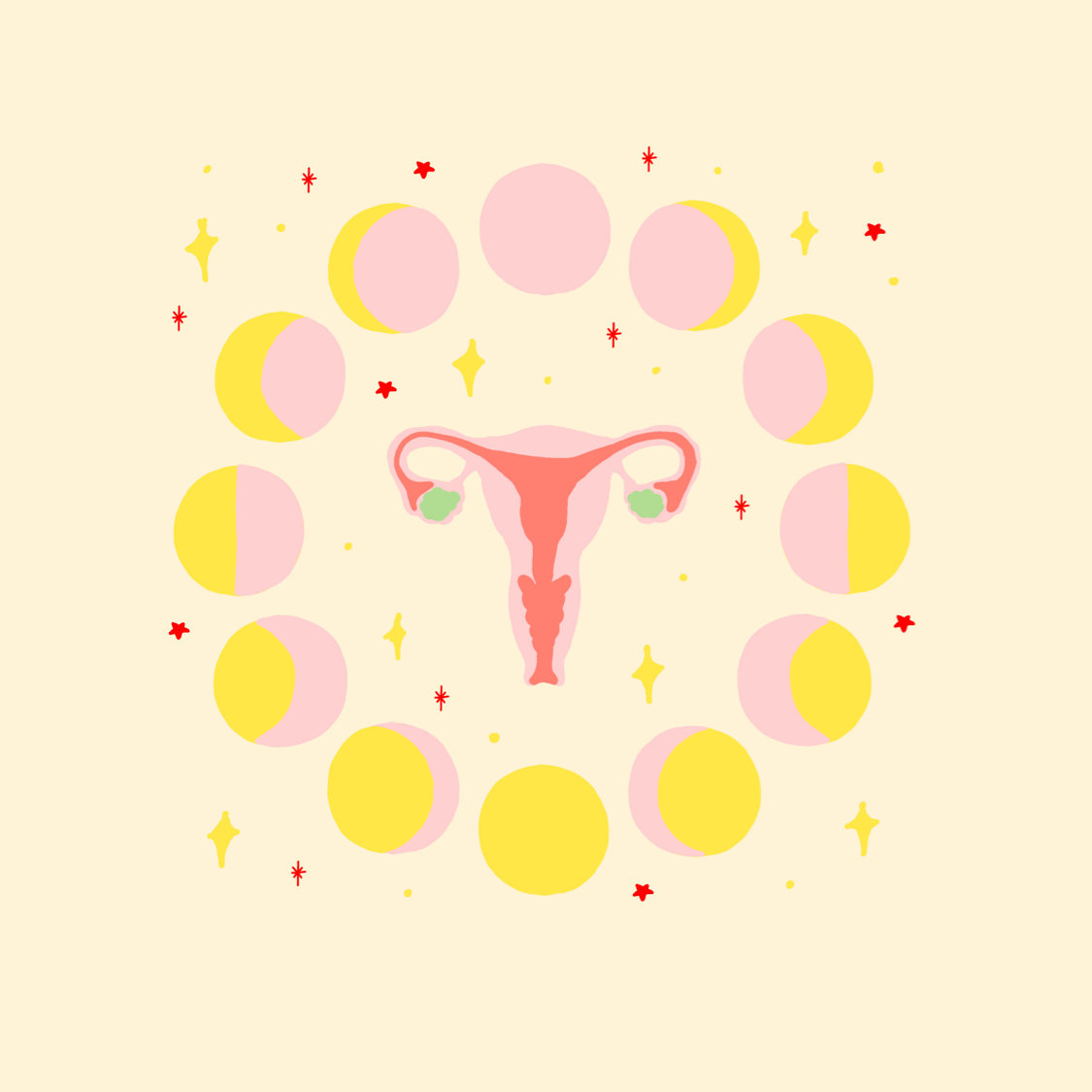Purpose
The day of the first drop of blood, we see this as the start of “menstruation.”
The thickened endometrium is shed and discharges blood as the ovary is preparing to release the egg. The endometrium thickens again after ovulation. The endometrium sheds again if the ovulated egg does not meet a healthy sperm to become a fertilized egg and it does not implant. Then, new menstruation begins.
This entire process repeats throughout women's reproductive age. Let’s take a closer look at what changes our body undergoes during this cycle that occurs about 400 times in a lifetime.
Three Steps Repeated 400 Times in a Lifetime

1. Follicular phase
⏰ Duration
- Starting from the first day of menstruation, it can last from 11 days to 27 days (an average of 14 days). - It overlaps with menstruation (3–7 days).
⚡ What Happens in the Body
- Menstruation begins if not pregnant in the previous cycle. - Follicle (immature egg) matures to an egg.
🎢 Changes in Hormones
- Early: Low estrogen and progestogen levels - Menstruation: Slight increase in the secretion of follicle stimulating hormones - Post menstruation: Sudden increase of luteinizing hormone and estrogen levels
💁♀️ Body Symptoms
- Menstrual bleeding (3–7 days) - Menstrual pain (cramps, backache, headache, and chest pain) - Fatigue
2. Ovulation
⏰ Duration
- Continues from post ovulation to early luteal phase - 16–32 hours
⚡ What Happens in the Body
- The matured egg is ovulated in the ovary. - You become pregnant when the egg meets sperm.
🎢 Changes in Hormones
- Early: Sudden increase in luteinizing hormones and estrogen levels decline - Ovulation: Luteinizing hormones peak and fall. Slightly increase in follicle-stimulating hormones - Post ovulation: Decline in estrogen levels and increase in progesterone levels
💁♀️ Body Symptoms
- Increase in body temperature - Egg white-like vaginal discharge - Ovulation bleeding (rare) - Mild cramps on one side of the pelvis - Sensitive breasts - Increase in sexual drive - Developed touch, taste, and vision
3. Luteal Phase
⏰ Duration
- Starts after ovulation and can last from 11 days to 17 days (an average of 14 days).
⚡What Happens in the Body
- The embryo prepares for implantation. - Endometrium gets thicker and the mucus of the endometrium thickens.
🎢 Changes in Hormones
- Early: Increase in estrogen levels and progesterone levels - Post luteal phase: Estrogen levels continue to increase. Decline in luteinizing hormones and follicle-stimulating hormones
💁♀️ Body Symptoms
- Premenstrual syndrome (PMS) - Breast swelling - Heightened sexual arousal - Increased appetite
Summary
- The menstrual cycle includes the follicular phase (including menstruation)–ovulation–luteal phase.
- Knowing the physical and psychological changes in each menstrual cycle phase is the basic condition for health.
- The precise duration and symptoms of each phase may vary individual.
